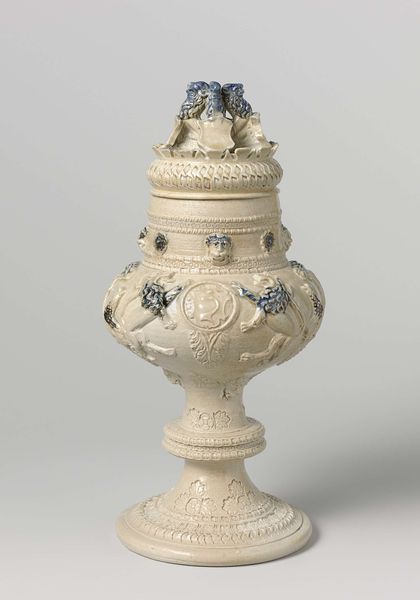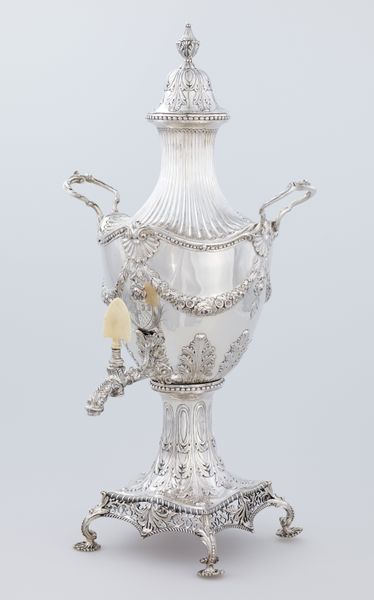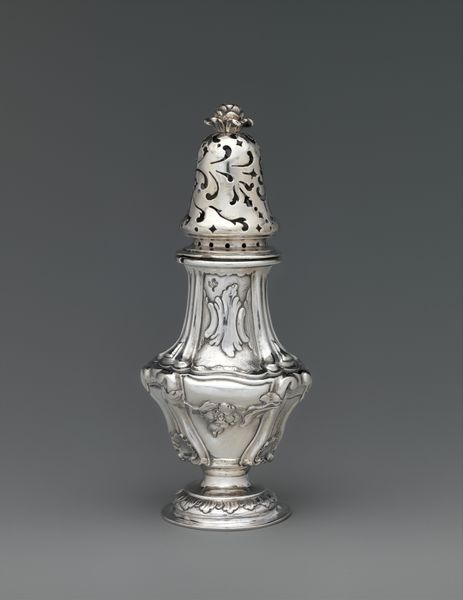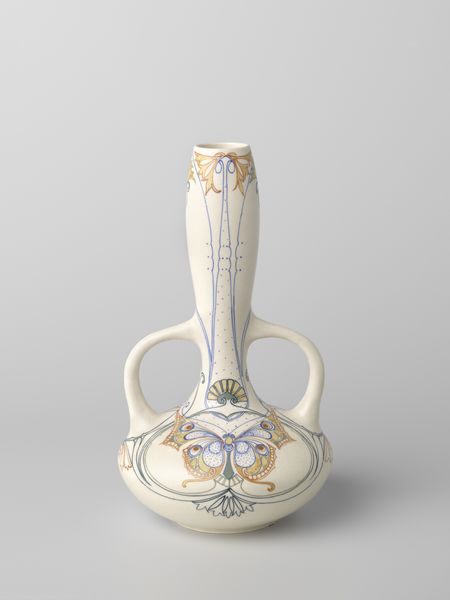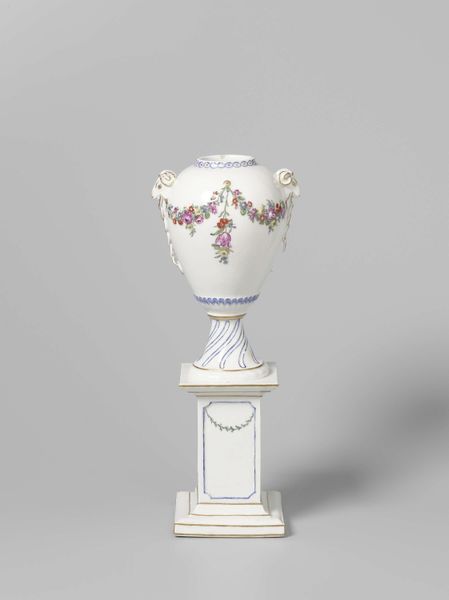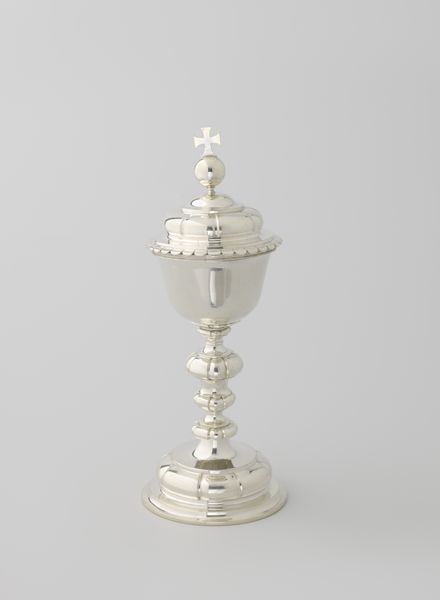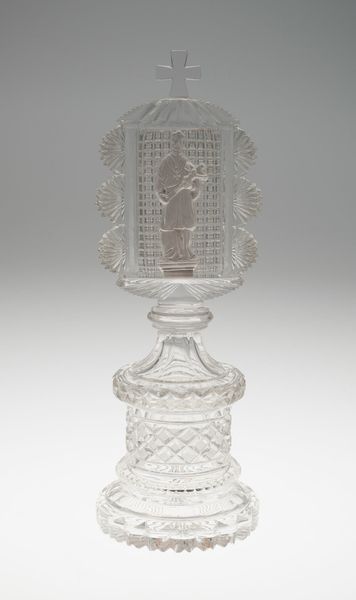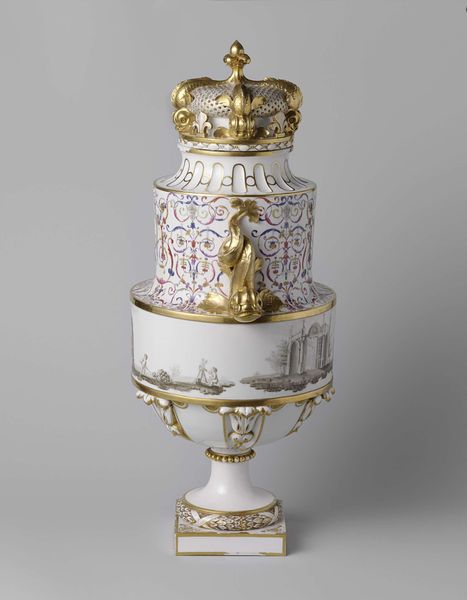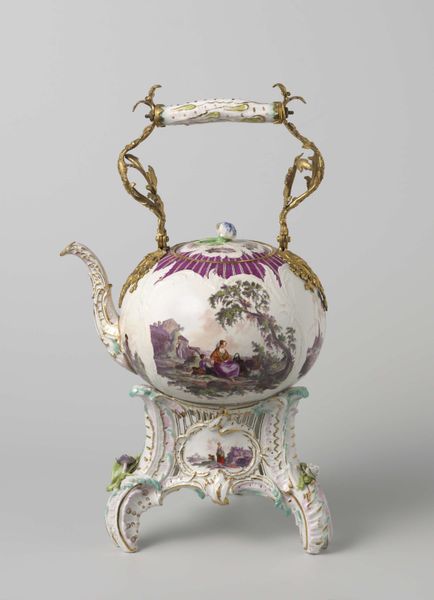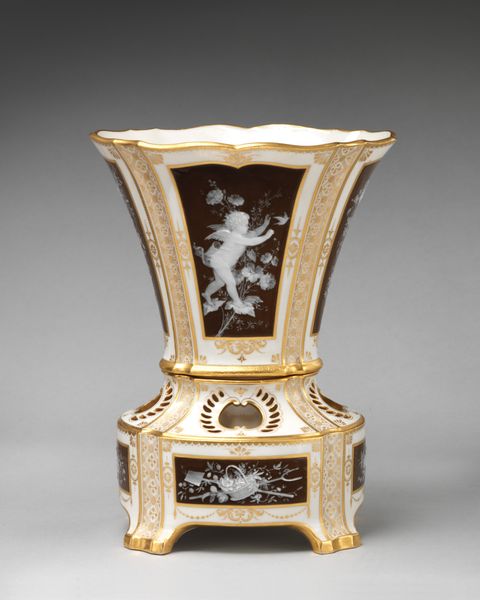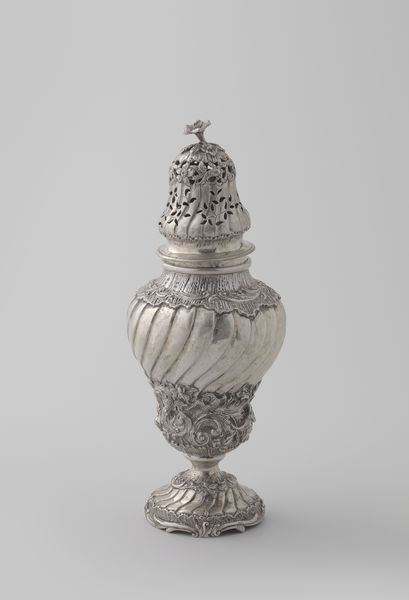
Dimensions: height 18.1 cm, width 9 cm, depth 8.5 cm, width 5 cm, depth 5 cm
Copyright: Rijks Museum: Open Domain
Editor: So, this is the "Vaas," a ceramic vase from between 1774 and 1784, made at the Loosdrecht porcelain factory. The Rococo style and the birds give it a pastoral feeling, almost like it belongs in a fairytale. How would you interpret this piece? Curator: That fairytale quality is exactly right. Look closely at the birds – do they remind you of anything? Perhaps symbols from ancient myths or folklore? Consider, too, how birds have carried symbolic weight through cultures - messengers, spirits, freedom, or even prophecy. Editor: I hadn't thought of that! The birds are sort of generic-looking fowl... How do you connect those to something deeper? Curator: Think about Rococo. It's a style known for its lightness and playful themes, right? Now, consider how the depiction of birds within that aesthetic context, along with the gilded lattice work evoke a sort of artificial paradise. Editor: I see what you mean! It is almost like these aren’t supposed to be *real* birds. It is this manufactured ideal… almost…escapist? Curator: Precisely. The Rococo style can represent escapism. Now consider the material—delicate porcelain. What does that brittleness, that preciousness, communicate when paired with imagery suggesting a pastoral fantasy? Does it highlight the fragility of that dream, perhaps? Editor: So, the ceramic and the birds aren’t just decorative—they reflect bigger social desires. The object as a container of collective memory... Interesting! Curator: Exactly. It shows the desire for tranquility. We can interpret it today as a reminder of humanity’s enduring quest for harmony even amidst, or perhaps especially during, chaotic times.
Comments
No comments
Be the first to comment and join the conversation on the ultimate creative platform.

